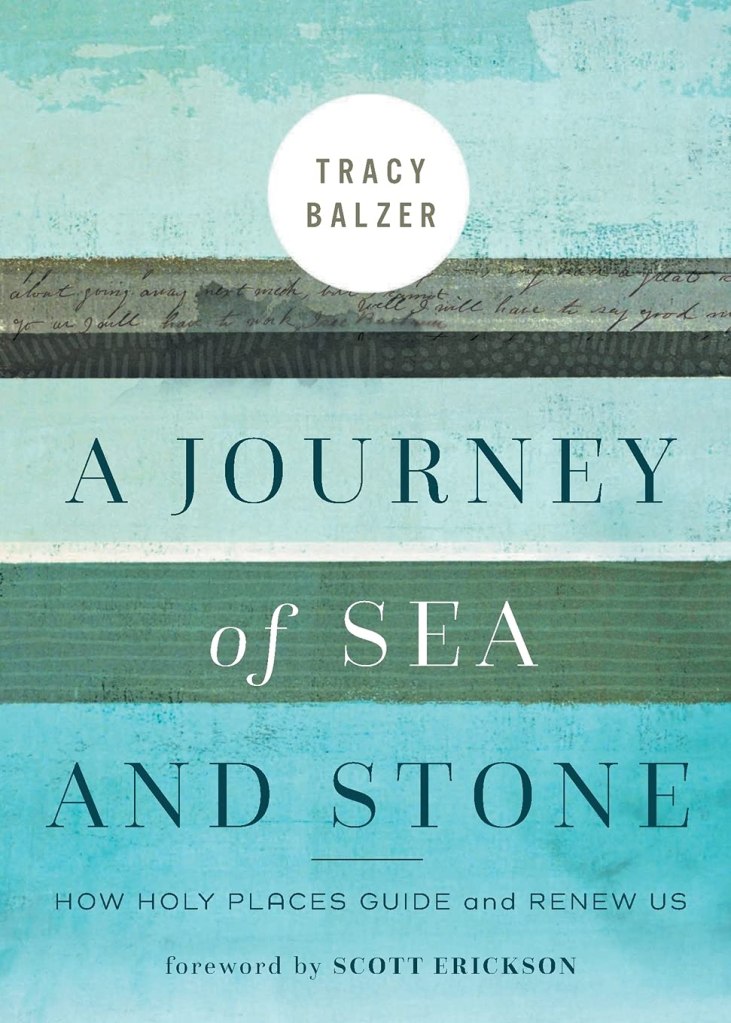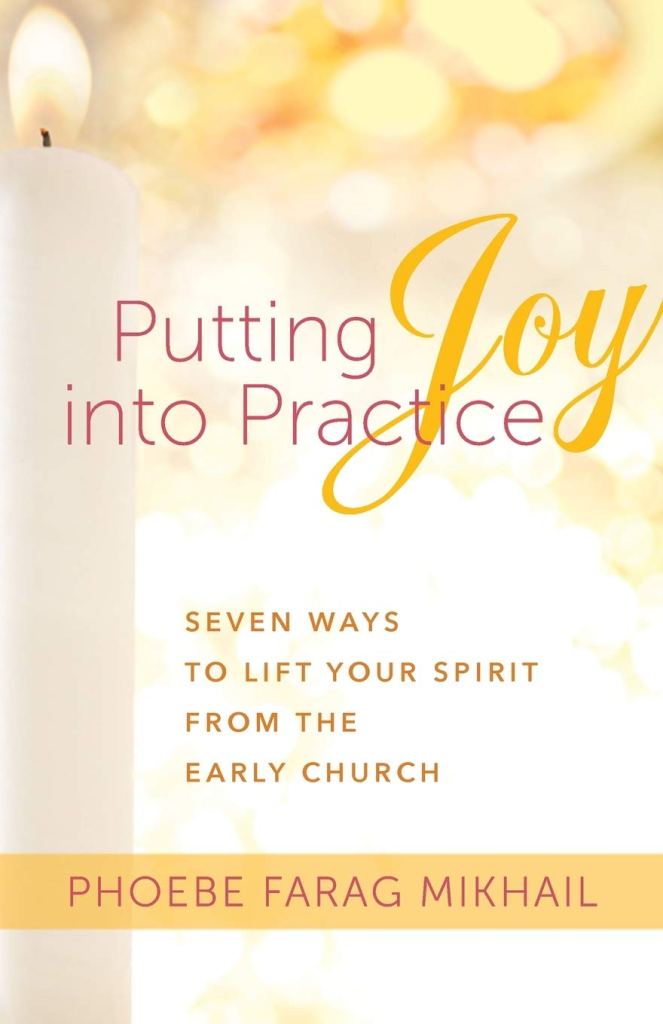June 9 is traditionally recognized as the Feast of St. Columba, who in 563 AD landed on the Scottish island of Iona to begin a monastic community. Author Tracy Balzer has visited Iona over a dozen times, most often taking groups of pilgrims with her to learn of the deep and wide Christian influence of those early Celtic Christians. The following is an excerpt from her new book A Journey of Sea and Stone: How Holy Places Guide and Renew Us (Broadleaf Books), which will be released on June 8, 2022.
***
The tiny island of Iona in the Inner Hebrides of Scotland has a history so momentous in the Christian story that we risk hyperbole when we recount it. How the Irish Saved Civilization is not only the title of Thomas Cahill’s best-selling book; it could easily serve as a definitive statement about the role that Iona played in history, grandiose as it may sound. The “Irish” Cahill refers to includes Columba and his band of monks, who apparently possessed this desire for the sacred in addition to a healthy dose of wanderlust. They had read of the ascetic life of the Desert Fathers in Egypt, and this inspired many of them to seek out a “desert” of their own—a remote and lonely place where their service to God would be undeterred. The wild and windswept isle of Iona, just three miles long and one mile wide, would become their “desert.” For the better part of the next six centuries, a monastic community would be present on Iona.
An oft-cited prophecy attributed to Columba (though its true author is unknown) makes a claim worth pondering:
Iona of my heart, Iona of my love,
Instead of monks’ voices shall be
the lowing of cattle;
But ere the world shall come
to an end,
Iona shall be as it was.

This prediction—that the audible voices of monks would not always be heard on Iona—proved to be true. In the centuries following Columba’s death in 597, his monastery was repeatedly attacked by Viking marauders who plundered its treasures and eventually destroyed the place altogether.3 Even so, their words echo throughout history, speaking through the glorious illuminated manuscripts they left behind, the most famous of which is the Book of Kells. Later, Benedictine monks occupied the space where Columba’s monastery stood and speak today through the ruins of the now restored abbey. Its ancient walls reverberate with the prayers of those who have gone before, expressed in stained glass images of Celtic saints like Columba, Patrick, and Brigid. Their bold proclamation of truth remains in the intricately carved high crosses that stand in front of the abbey, a visual narrative of biblical history. To be on Iona is to experience a deep silence, simultaneously mingled with the voices of the saints of the past.
Sacred places, wherever they might be, share this distinction. They are made sacred by sacrificial living and dying, especially when both are expressions of a deeply held faith. Such places ask us to stop and listen, focus our eyes intently, and patiently wait for those ancient lives to speak. We are invited to learn and receive by purposefully reading, investigating, and pondering the ancient texts, particularly those from the Bible. By examining the lives of the great saints of old, we may be surprised to find the courage and conviction in their lives spilling over into our own.
There is also something about encountering these “voices” that resonates with us internally. Many of us recognize a natural inclination within ourselves to walk in the footsteps of the great saints and influencers of history. Like the late congressman John Lewis and others, do you find the idea of crossing the Edmund Pettus Bridge in Selma, Alabama, ennobling? Or do you imagine running your finger along the carved names of soldiers on the Vietnam Memorial in Washington, DC? Do you desire to visit the Holy Land and walk in the footsteps of Jesus?
The world turns and changes. The audible voices of monks, saints, and the great bridge crossers evaporate, but they leave behind treasures for us to discover, spiritual nourishment for our souls so that we might continue on the good path. Their voices linger in these sacred places, inviting us farther up and deeper in.
In the frantic pace of our daily lives, we often fret about not having enough time . . . and then we whine about being bored when it feels we have too much of it. No matter how many planners or apps we employ to get a handle on it, we can’t seem to feel anything but behind. Time can feel like an enemy, especially if we crave deep, spiritual reflection on what is most important. The crowded, noisy spaces most of us inhabit are not conducive to that reflection or to prayer.
On Iona, there are no movie theaters or fast-food restaurants, no stoplights. Even the internet is not reliable. Whenever I offer this description of Iona, the response is almost always an amusing one: Why would anyone want to spend their vacation time going somewhere that has . . . nothing? It is true that on Iona there is less of everything, which means there is more space for what we truly need if we hope to attend to our sense of “home,” our deep longing for the things of God.
Sacred places like Iona offer the one thing we cannot seem to grasp in our hyperproductive culture: unstructured time. And that is a true gift for the weary soul. The New Testament cites two Greek terms for time: chronos and kairos. Chronos—as the word implies—is linear, with a beginning and an end, measurable in minutes and hours, weeks and months, centuries and epochs. We can’t read a book without thinking chrono-logically. This is how we grasp the passing of our earthly days as well: we had a beginning, the day of our birth, and one day we will experience the end, the last day of the chronos of a life.
Kairos, however, cannot be contained by a one-dimensional calendar or clock. It doesn’t have a straightforward “before” and “after” or “beginning” and “end.” Kairos is God’s time. It is the time and way in which God fulfills his purpose. In the Gospels, when John the Baptist tells his followers that “the kingdom of heaven has come near” (Matthew 3:2), he is talking about kairos, when what God wants done is done. Kairos reveals that through Christ, a whole new way of understanding time has entered the world: it is time that is characterized not by dates and calendars but by the will of a God who is working to make all things new.
Because arriving on Iona is such a visceral experience, this particular sense of time is one of the first things I notice. I feel the pressure of chronos slide off of me like old skin that needs to be shed. On Iona I experience time in a dramatically different way than I do in my everyday life; time there seems multidimensional. The simple fact of being rid of the pressures of being constantly connected and accessible adds a dimension of true freedom to life. Rarely have I witnessed anyone in a hurry on Iona, and rarely have I been in a hurry when I am there.
The pace at which we live our lives is an indicator of the inner condition of our souls, and Iona insistently points this out to me. Along with the awareness that time moves differently on Iona comes a deep quietude that is freely available on the island. Even in the height of summer, when scores of tourists come for the day, I still manage to find my own private space on the beach. (Correction: I often have the beach entirely to myself.) The only sounds I hear are seabirds and wild geese flying overhead and the calming rhythm of waves and wind. Ewes are bleating in the distance, calling for their lambs. These natural sounds melt into the kind of silence that seems elusive in my daily life. There is the mechanical hum of the dishwasher or clothes dryer, or the clang-clang of farm vehicles bouncing along our rutted street, or the insistent buzzing of my phone, or the whining of my dog, who is adorable but insists that I be the recipient of her requests.
I can’t complain. I live in a semirural area where deer greet us regularly and a herd of cows munches contentedly in the field behind our house. It’s nothing like the high-energy sounds of an urban setting. But where silence is concerned, everything is relative. It’s not only the external volume that can overwhelm but our own internal noise. The stressful thoughts and fearful imaginings that populate my internal landscape are so loud at times that I might just as well be in Times Square on New Year’s Eve. Sometimes I long to escape to Iona just to stifle the abundant noise that fills my inner and outer worlds. The peace I experience on the island comes not from the absence of conflict but from a shalom of true inner and outer flourishing.
The peace that we obtain in sacred places is something we can take back with us into the world and set loose like a thousand colorful balloons into an empty sky. I experience this kind of shalom most profoundly as I interact with other people on Iona, most of whom I do not know and likely will not ever see again. We greet each other with a smile on the walking path. We worship together in the abbey every evening. There exists an unspoken agreement that while we are all here together on this fleck of green land floating in the Atlantic, we are not about to let ideologies or theological differences harm the shalom of a holy moment.
Sacred places like Iona often have a way of recalibrating our lives—the pace at which we move, the ways we choose to spend our time and money, and the ideas that call for our attention. This is especially noted where monastic life has been or is being lived out. 4While the historic Columban and Benedictine monasteries on Iona ceased existing many centuries ago, the rhythm of daily prayer and worship remains, led each morning and evening in the abbey by the members of the Iona Community.4 Each day the bells of the abbey ring, morning and night, prodding me to stop what I’m doing and be present to the God who is very near. The rhythm of entering the abbey sanctuary each day for prayer anchors me in a most life-giving way.
Of all the charming souvenirs that routinely tempt me in the Scottish isles, it is this sacred rhythm that is my most valuable keepsake. Iona has taught me that the regular spiritual practice of stillness before God is what gives me life. It is what takes me from chaos to kairos. But eventually, I have to leave Iona and come home.
This essential rhythm comes under forceful attack the moment I set foot on US soil. The transition from the peace of Iona to the frantic pace of modern living is jarring: long lines of impatient travelers at the airport, the stress of the customs process, the dramatic reacquaintance with the speed of cars on the freeway. I may have only been gone for two weeks, but I feel I’ve entered a foreign country rather than the one of my birth. The external demands of modern culture don’t have much patience for the internal rhythms that have been cultivated on a remote island.
I am well aware that merging these two realities will be a battle, yet too often the forces of busyness and productivity overcome my desire for a healthier rhythm that is supported by regular engagement with God in the same silence and solitude I find on Iona. Even though I know good and well that a rhythm of silence, in my own sacred space, is what my soul most needs, it is the very thing I most easily sacrifice. The result is a disordered pattern of higher levels of anxiety and stress. And that is not the way I want to live.
It took going to Iona, to a sacred place, to show me the importance of rhythm for my soul. So when I am home, I know that my best days are also rooted in that rhythm, and that begins with finding a sacred place of my own right where I am. In the spring and summer, that is likely to be my front porch.
Our porch faces due east, just like the Argyll Hotel on Iona. Instead of gazing out on the Sound of Iona and its calming waters, I sit on my porch in Arkansas and watch the myriad of colorful birds that visit our trees and feeders: red-bellied woodpeckers, goldfinches, cardinals, indigo buntings, and hummingbirds en masse. On other days, I opt for the tartan-upholstered chair in my home office, a space I’ve intentionally made as unoffice-like as possible by adorning it with the images and colors of Iona.
I claim my own sacred space. For twenty or thirty minutes, whether surrounded by birdsong or the quiet of my home office, I still my heart and mind and listen for the voice of God. I tend to draw upon the Psalms for wisdom, as that ancient prayer book is so instructive when it comes to conversing with God. And always there are the essential elements of stillness and silence.
The rhythm that sacred places offer us, whether on a remote island or our front porch, can serve us well as we seek a healthier order to our lives. Taking regular time, daily, for quiet meditation is one of the ways I can best appropriate the gifts Iona has given me. I come away not only with a quieter soul but with a deeper knowledge of God’s fathomless love for me and for the world.
***
From Journey of Sea and Stone: How Holy Places Guide and Renew Us by Tracy Balzer copyright © 2021 Broadleaf Books. Reproduced by permission.












